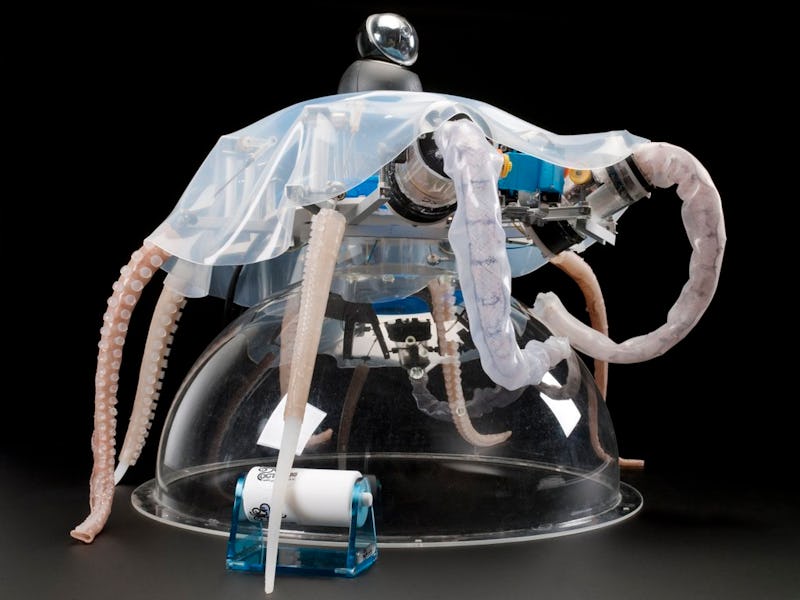Soft Robot Builders Prepare for a "Grand Challenge"
The Robosoft Grand Challenge will be a two-day battle between bots that bend in many, many ways.

Robot makers from around the globe are preparing for the RoboSoft Grand Challenge, set for April 29-30, 2016, taking place at the Research Center on Sea Technologies and Marine Robotics in Livorno, Italy.
However, this is not some neo-version of Robot Wars — although competition is what the expo is about — but also a chance for those seeking to pioneer in the field of soft robotics to show the world how their boneless bots are adept, even possibly the future of robotics.
“Boneless” refers to a basic tenet of soft robotics, where the machines are based on the movement of invertebrates, like insects and mollusks: the reason being that unlike traditional robots that follow lockstep movements, a “soft” robot can adapt with less maintenance and programming, and can provide a more natural experience.
For example, many robots working in the automotive field are on assembly lines. The machines must use the same motions and apply the same amount of strength in grip — if not, calamity can follow — so such robots must be monitored to ensure the production remains standard and steady.
A soft robot on the other hand, can be designed to handle each task differently — and such a droid can do so without necessarily being programmed to complete a motion. Its ability lies in its lack of skeleton structuring. Instead of relying on stiff limbs moved by relays and stiff joints in similar fashion to a human arm or leg, a soft robot can be built to possess a tentacle, like an octopus. Wires and circuits are there, as one would find in a typical robot, but without the bone-style base, a robotic tentacle can unfurl and twist, grasping from several potential angles and apply gripping strength in more of a compensatory, balanced fashion, rather than a fixed equation of power.
An example of such a bot is the creation of Cecilia Laschi, Professor of Biorobotics at the Scuola Superiore Sant’Anna in Pisa, Italy. As she told Scientific American Wednesday, she first encountered resistance when trying to develop her octopus-inspired soft robot: “In the beginning, very traditional robotics conferences didn’t want to accept my papers…now there are entire sessions devoted to this topic.”
After studying the motion of a cephalopod, Laschi designed a robot whose limbs curl, stretches, and grasps, using an internal web of springs and cables to work a bendable tentacle that, by use of heat, returns to its original shape when intended. The robot can wrap around a target — importantly, without prior programming — while telling the arm what it will be grabbing. “It’s a completely different way of building robots,” says Laschi.
Unfortunately, for anyone just learning about the Robosoft GC, registration for the competition is closed, but those looking to get involved with soft robotics can visit softroboticstoolkit.com, which features a great deal of information on the sort of actuators, controllers, and sensors necessary to get building — as well as some test study recaps and the scoop on soft robot competitions to come.